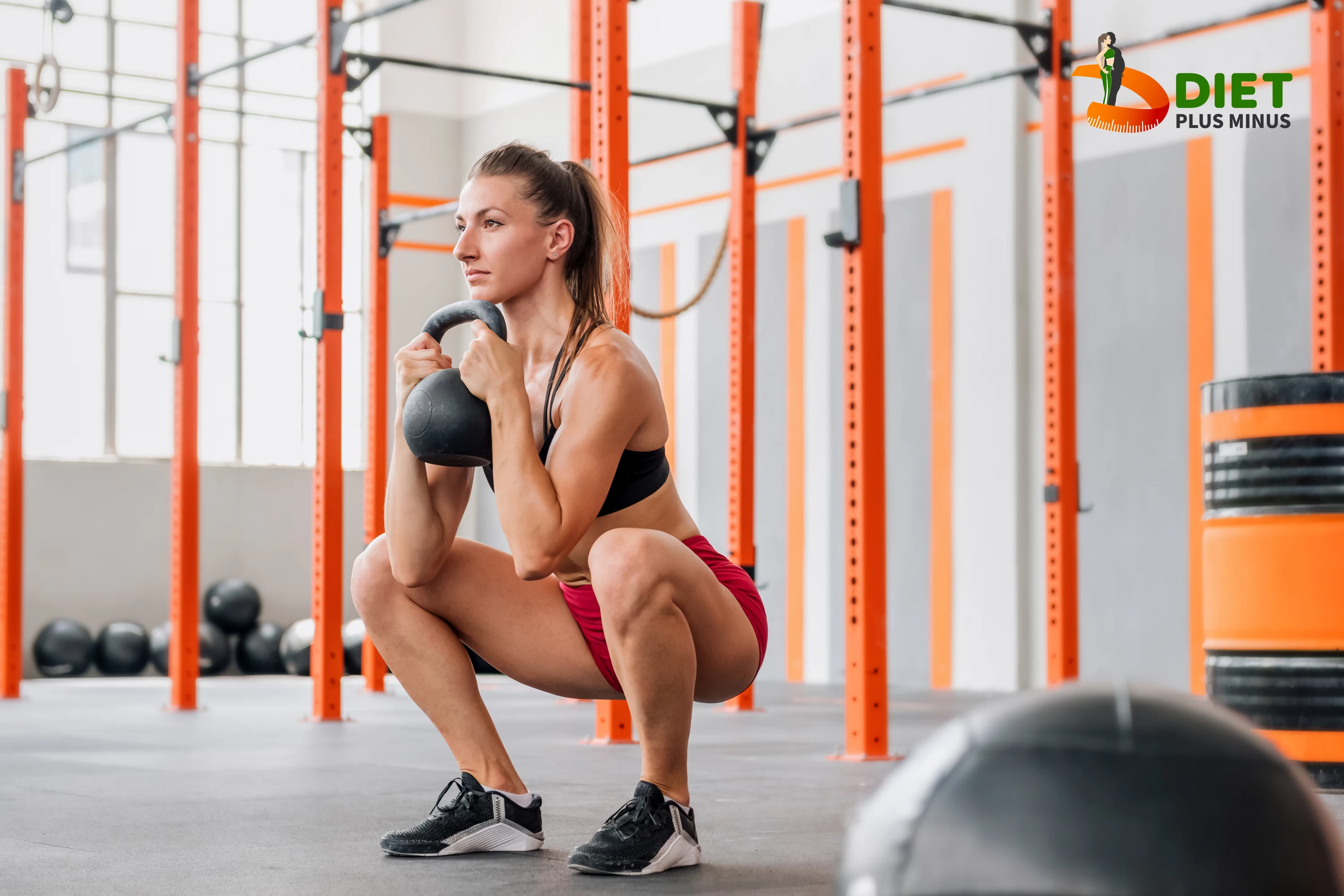Quads: Goblet Squat

Quads—Goblet Squat
Goblet squats strengthen quads. They involve squatting with a dumbbell or kettlebell in front of your chest. This ensures proper squat form and torso alignment. The goblet squat allows you to focus on quads without worrying about balance. A weight in front of your body activates the core and challenges the quads. It also improves posture by increasing hip flexor flexibility and squat range of motion. By focusing on form during each repetition, this exercise targets all four quadriceps muscles—rectus femoris, vastus lateralis, vastus medialis, and vastus intermedius—for stronger gains over time.
Exercise Benefits
Quadriceps benefits from goblet squats are numerous. They boost quad muscle size and strength. The goblet squat directly presses the quads, working them harder than lunges or leg presses. Due to their difficulty, goblet squats improve balance and stability, making them ideal for core strength and injury prevention. Finally, goblet squats can boost fitness and burn calories as part of a workout routine. Goblet squats may improve fitness and performance.
Goblet Squat Instructions
1. Start the goblet squat with feet slightly wider than shoulder-width and toes pointed outward. Take a kettlebell or dumbbell and hold it at chest level with both hands just below the handle.
2. Start by pushing your hips back and down, keeping your chest up and eyes forward. Lower until your thighs are parallel or slightly above the ground (depending on flexibility). Pause at the bottom before driving through your heels to stand up, keeping quads tight.
3. Perform 3 sets of 8–12 reps, resting 30–60 seconds between sets, depending on weight. Gradually add weight while maintaining proper form.
Common Mistakes to Avoid
One of the biggest goblet squat mistakes is using too much or too little weight. Choose the right weight for your strength to avoid injury and optimise form. If it's too heavy, you won't be able to maintain proper form; if it's too light, you won't benefit from the exercise. Before adding weight to goblet squats, focus on form.
Avoid caving in your knees when squatting. This can damage knee ligaments and tendons over time. For a good quad workout, push your knees outward as you lower yourself and keep them in line with your feet. To avoid straining your neck or lower back, keep a straight back during this exercise.
Exercise Variations
Variations can boost the quad-strengthening goblet squat. A pause goblet squat is one variation. This emphasises your quads and helps them grow faster. A weighted vest adds intensity and engages other muscles. Squat jumps increase quad workout difficulty. Starting in a deep squat, you jump as high as you can and clap at the top of each rep. These harder variations will boost your leg workouts.
Muscle Activity
Goblet squats require muscle activation. This exercise targets the quadriceps, a large group of four muscles on the front of the thigh responsible for knee extension and hip flexion. The quads stabilise and move the body downward during a goblet squat. Squats are also assisted by glutes and hamstrings. Athletes must engage their core to maintain balance and body alignment when squatting. Squats and deadlifts are safer with this activation, increasing strength.
Conclusion
The goblet squat strengthens and powers the lower body. It's suitable for gym newbies and competition-ready athletes. The goblet squat improves core, hip, and leg mobility and stability, as well as daily-use muscles. It can be done without weights or equipment. This exercise can improve physical health and performance if done correctly and regularly under supervision.
In Short:
Steps involved:
-
Hold the dumbbell close to your upper chest, dumbbells touching your pectorals and elbows in. Your feet should be placed slightly wider than your shoulder width.
-
Come down into squat, with your elbows inside the track of your knees.
-
Push through your with your back straight and chest out, and return to the initial position.
Do’s:
-
Keep your knees inline with your toes.
-
Always keep your body stable.
-
Use the full range of gluteal and thigh muscles and keep your torso straight.
-
Keep the elbows pulled in tight closer to your ribs.
Don’ts:
-
Do not bend your spine.
-
Don’t wide open your legs too much.
-
Do not lean too much backward or forward.
